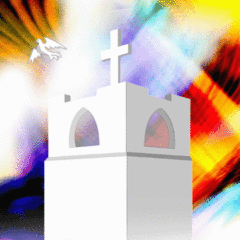The biblical observance of a Jubilee Year is a special Divinely-sanctioned year of universal forgiveness of debts and pardon for sins. In the Old Testament the Jubilee Year is mentioned to occur every 50th year, during which financial indebtedness would be forgiven, prisoners would be pardoned, and slaves would be freed. In Leviticus 25, the Lord God Almighty commands that the Jubilee Year shall be a holy year, stating, “Thou shalt proclaim remission to all the inhabitants of thy land: for it is the year of jubilee” (25:10).
Regulating property rights was also included in the Jubilee observance found in the Book of Leviticus, and everyone was supposed to return to their family property in the Year of Jubilee. Moreover, the Jubilee Year was to be a time of reconciliation between adversaries and of personal conversion to faith in God.
As I write this newsletter article, it’s still the Season of Advent and it’s five days before Christmas Day. We have just finished our “Mary, Did You Know?” series for our midweek Advent services, and my mind is already turning to the New Year ahead. After contemplating the biblical answer to the question “Mary, did you know?” over the past several weeks of Advent, my mind is starting to shift to the themes of the various liturgical seasons of the Church calendar in 2025. And my prayer is that 2025 will be a year of personal, spiritual, national, and global Jubilee for all of us.
I pray that 2025 will be a year of Jubilee in our hearts, Jubilee in our homes, Jubilee among our friends and family, Jubilee for our city and state, Jubilee for our nation, and Jubilee for our whole world.
Just as Mary could not have known early in Jesus’ life that he would be the One and Only to give himself as the perfect offering of atonement for all humanity; and just as Mary (the woman uniquely graced by God to bear the Son of God) once held the infant Jesus in her arms while not knowing that she would one day hold his lifeless body in her arms at the foot of Jesus’ cross, as he thereby completed the once-and-for-all-time sacrificial offering for our infinite atonement and eternal life; and just as Mary could not have known that, after all the terror and death of Jesus’ crucifixion, she and many others would find his tomb to be empty on the morning of the third day, and they would encounter the risen Lord Jesus many times before his Heavenly Ascension, which brought ultimate victory over sin, death and the devil; and just as Mary and the Apostles could not have had detailed foreknowledge of the universal Jubilee of God’s salvation through Jesus’ death and resurrection, we too do not know all of what God has in store for us in this Year of Our Lord, Two Thousand and Twenty-five, and in the years to come beyond it.
For as the Word of God declares within the Holy Scriptures, “Things no eye has seen and no ear has heard, that have not entered the heart of humankind — these things God has prepared for those who love him” (First Corinthians 2:9). Amen! And thanks be to God!
Happy New Year & Jubilee Blessings!!! Pastor Tim
